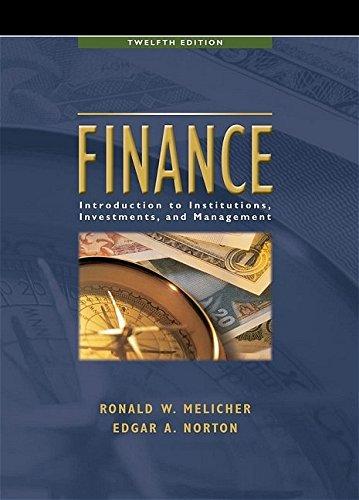Answered step by step
Verified Expert Solution
Question
1 Approved Answer
The ______________ is the length of time funds are tied up 1. operating cycle 2. cash conversion cycle 3. payables deferral period The________________is the average

The ______________ is the length of time funds are tied up
1. operating cycle 2. cash conversion cycle 3. payables deferral period
The________________is the average time required to convert
1. inventory turnover ratio 2. inventory conversion period
The_____________ is also known as the days' sales outstanding.
1. average collection period 2. receivables turnover ratio 3. receivables aging schedule
its ___________ would decline, its interest expense would be reduced
1. monthly cash budget 2. cash conversion cycle 3. payables deferral period
Supply Chains and Working Capital Management: Cash Conversion Cycle All firms follow a "working capital cycle" in which they purchase or produce inventory, old it for a time, and then sell it and receive cash. The -Select- paying for working capital and collecting cash from the sale of the working capital. The equation for this is as follows: is the length of time funds are tied up in working capital, or the length of time between Cash Conversion Inventory conversion period + Average collection period- Payables deferral period The-Select- is the average time required to convert raw materials into finished goods and then to sell them. It is calculated as follows: Inventory conversion period (ICP) Inventory/Cost af goods sold per day TheSelect is also known as the days' sales outstanding. It is the average length of time required to convert the firm's receivables into cash, that is, to collect cash following a salc. It is calculated as follows Average collection period (ACP or DSO) Receivables/Sales 365 The payables deferral peod is the average length of time between the purchase of materials and labor and the payment of cash for them. It is calculated as follows: Payables deferral period (PDP)-Payables/Daily purchases Payables/Cost of goods sold/365 If a firm can sell goods faster, collect receivables faster, or defer its payable longer without hurting sales or increasing operating costs, its-Select- mproved. This demonstrates that good working capital management is important to a firm's financial position and performance ; would decline, its interest expense would be reduced, and its profits and stock price would be Supply Chains and Working Capital Management: Cash Conversion Cycle All firms follow a "working capital cycle" in which they purchase or produce inventory, old it for a time, and then sell it and receive cash. The -Select- paying for working capital and collecting cash from the sale of the working capital. The equation for this is as follows: is the length of time funds are tied up in working capital, or the length of time between Cash Conversion Inventory conversion period + Average collection period- Payables deferral period The-Select- is the average time required to convert raw materials into finished goods and then to sell them. It is calculated as follows: Inventory conversion period (ICP) Inventory/Cost af goods sold per day TheSelect is also known as the days' sales outstanding. It is the average length of time required to convert the firm's receivables into cash, that is, to collect cash following a salc. It is calculated as follows Average collection period (ACP or DSO) Receivables/Sales 365 The payables deferral peod is the average length of time between the purchase of materials and labor and the payment of cash for them. It is calculated as follows: Payables deferral period (PDP)-Payables/Daily purchases Payables/Cost of goods sold/365 If a firm can sell goods faster, collect receivables faster, or defer its payable longer without hurting sales or increasing operating costs, its-Select- mproved. This demonstrates that good working capital management is important to a firm's financial position and performance ; would decline, its interest expense would be reduced, and its profits and stock price would beStep by Step Solution
There are 3 Steps involved in it
Step: 1

Get Instant Access to Expert-Tailored Solutions
See step-by-step solutions with expert insights and AI powered tools for academic success
Step: 2

Step: 3

Ace Your Homework with AI
Get the answers you need in no time with our AI-driven, step-by-step assistance
Get Started


